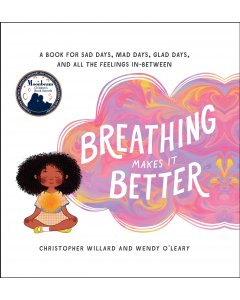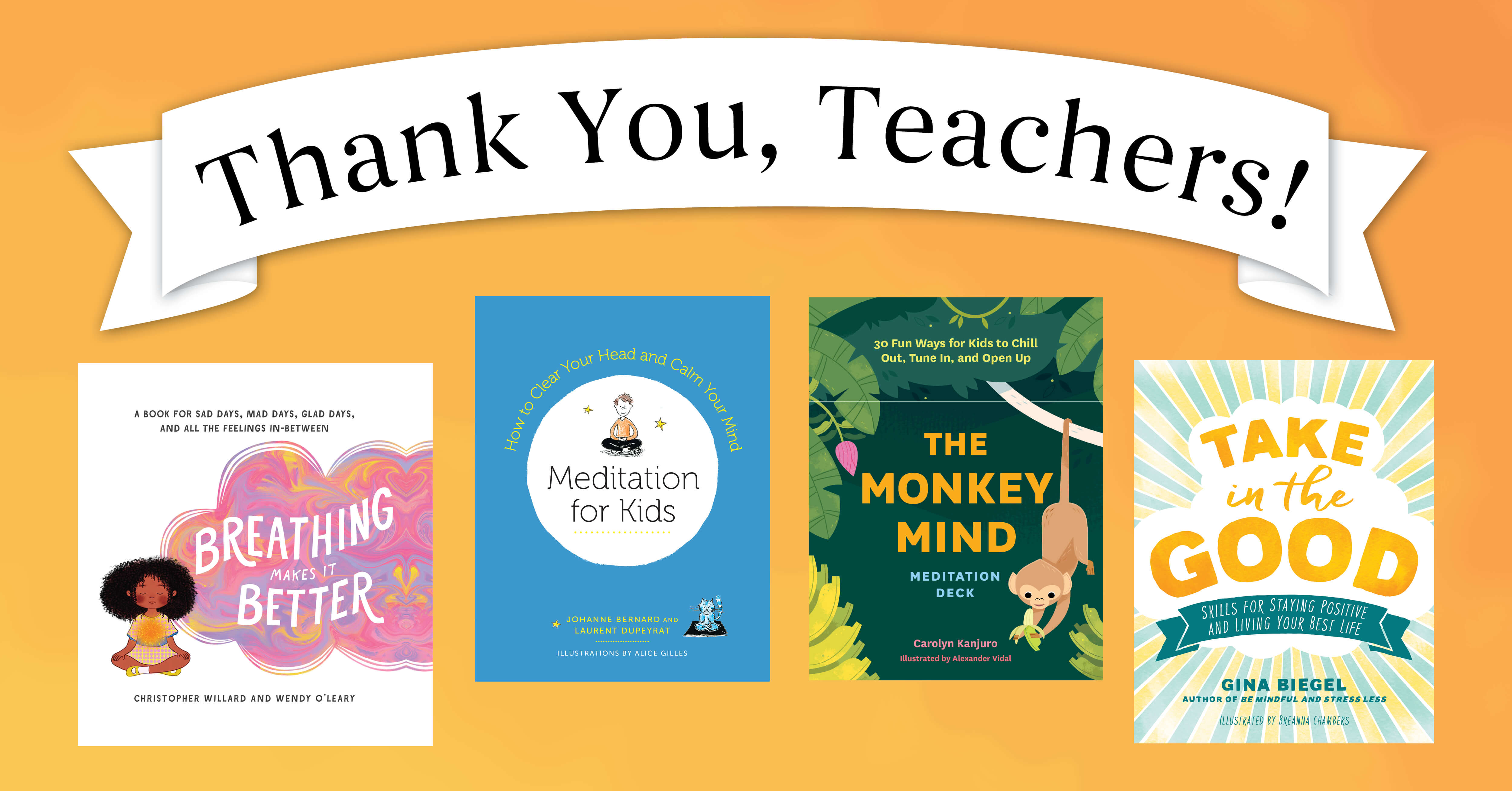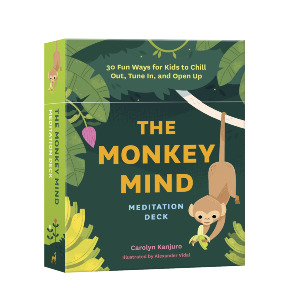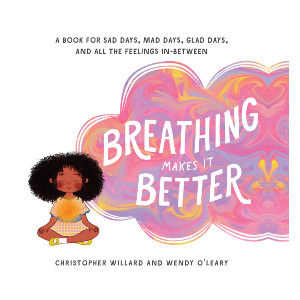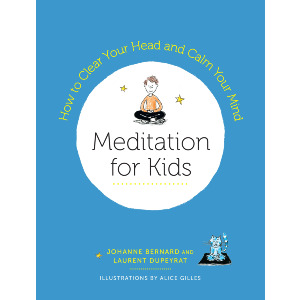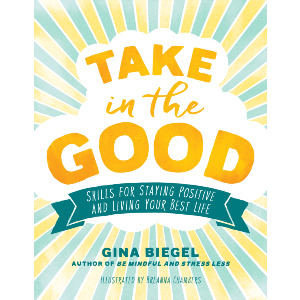

Christopher Willard
Dr. Christopher Willard is an author and educator who teaches at Harvard Medical School and serves on the board of the Mindfulness in Education Network and the Institute for Meditation and Psychotherapy. An established speaker in both meditation and psychotherapy communities, he regularly leads workshops and presents at conferences around the world.
Christopher Willard
-
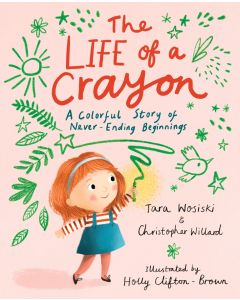 The Life of a Crayon$17.95- Hardcover
The Life of a Crayon$17.95- HardcoverBy Christopher Willard
By Tara Wosiski
Illustrated by Holly Clifton-Brown -
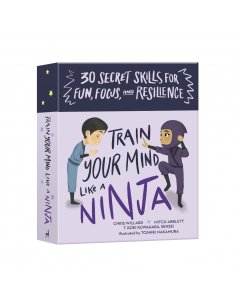 Train Your Mind Like a Ninja$18.95- MixedMedia
Train Your Mind Like a Ninja$18.95- MixedMediaBy Mitch Abblett
By Christopher Willard
By T. Koei Kuwahara, Sensei
Illustrated by Toshiki Nakamura -
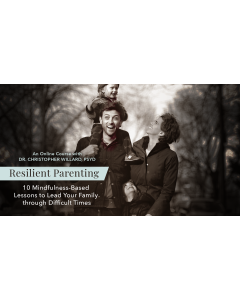 Resilient ParentingSpecial Price $149.00 Regular Price $249.00- Online Course
Resilient ParentingSpecial Price $149.00 Regular Price $249.00- Online CourseTaught by Christopher Willard
GUIDES
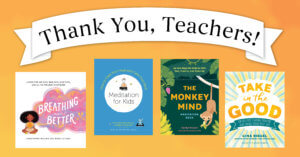
Happy Teacher Appreciation Week! | Free Activities Download
ENTER YOUR EMAIL ADDRESS TO RECEIVE A SET OF ACTIVITIES AND WORKSHEETS AS A PRINTABLE PDF.
As a thank you for all the amazing work you do as a teacher, we would like to offer you a set of free, interactive, and fun activities from The Monkey Mind Meditation Deck, Breathing Makes It Better, Meditation for Kids, and Take in the Good! These activities and worksheets will provide a hands-on way for kids to become more relaxed and attentive, more aware of their bodies and emotions, and more open toward others. All are perfect for use in a classroom setting and can be adapted to fit the unique needs of your students.
This download includes five cards and a companion educator's guide from The Monkey Mind Meditation Deck, an educator's guide created by the authors of Breathing Makes It Better, the Cherry Tree in the Garden guided meditation from Meditation for Kids, and the Take a Break with the 3 Bs activity from Take in the Good.
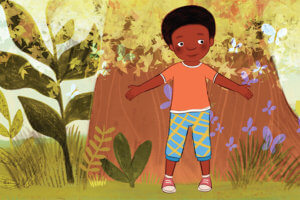
Breathing Makes It Better Educator’s Guide
Complementary Activities for Teachers & Caregivers
by Christopher Willard and Wendy O’Leary
Book & Activities are appropriate for children ages 3–6
Overview:
Read aloud and breathe along with this sweet story teaching children how to navigate powerful and sometimes overwhelming emotions. The rhythmic writing, recurring cues, and engaging illustrations support early literacy skills as well as social and emotional learning. The back matter includes additional practices to support the use of self-regulation and mindfulness techniques for children and the adults who care for them.
Objective:
This book supports educators, parents, and caregivers in sharing strategies to identify, name, and manage difficult emotions. It empowers children to cultivate skills for emotional intelligence that can be used throughout their lifetime.
Pre- or Post-Reading Activities
Vocabulary:
Ask children about words that may be new to them. Or have children make a list of unfamiliar words as you read. Encourage children to figure out meanings of words they don’t know from contextual cues and pictures.
Possible words for discussion include:
Uncomfortable
Lurks
Churns
Anxious
Secure
Fiery
Dull
Jumbled
Shallow
Peace
Activities to Identify Emotions:
The focus of the activities involving feelings is to name the feeling and identify how it feels in the body. Naming emotions in real time helps children develop emotional intelligence and regulate themselves rather than react.
Naming Emotions:
Have children list as many emotions as they can. They can also share how their bodies feel when they are experiencing this emotion.
Picturing Emotions:
Use artwork to show how you feel—create or find pictures of angry, sad, happy. . . .
Feeling Statues:
Ground rules of the game: all statues are still and silent.
Have one child come to the front of the class and quietly, without others hearing, tell them an emotion for their statue. Ask them to then make their statue. Other children try to guess the emotion and say how they could tell; for example, hands like fist made me think it was an angry statue. This is a great supportive activity for social emotional learning . . . how to identify emotional cues from others.
Variation:
Name a feeling out loud for the group and ask children to pose representing that emotion. Follow up with questions such as: How does it feel to pretend to have that feeling? What do you notice about your body? Your mind?
Breathing Activities
Hot Chocolate:
Activity directions listed in the back of Breathing Makes It Better.
Teddy Bear Breathing:
Activity directions listed in the back of Breathing Makes It Better.
Belly Breathing with or without Breathing Ball:
With belly breathing the belly gets a little bigger on the inhale and a little smaller on the exhale. It is as if there is a balloon in the belly that blows up when you breathe in and deflates when you breathe out. This breathing is sometimes also called balloon breathing and technically is diaphragmatic breathing.
You can also do this using an expanding ball (mini Hoberman sphere). Ask the children to breathe in as you open the ball and breathe out as you close it. This gives the children a visual focus and allows the teacher to set the pace for breathing with a visual aid. Remind the children that when they breathe in their bellies, like the ball, get bigger, and when they breathe out their bellies, like the ball, get smaller.
Questions to Ask While Reading
When you are on page that states “when your morning starts out terrible and your heart feels hurt or broken,” before reading the page that says “stop and take a breath,” ask what emotion they think the character is feeling and why. How can they tell by looking at the character’s face and situation? How might they feel in such a situation, or have they ever felt that way? Such questioning helps children develop empathy and emotional intelligence.
As you progress, you can see if you can cue the class to read “stop and take a breath” with you by saying, “what could you do?”
When it says “stop and take a breath,” and when the book says “breathe in, breathe out,” you can breathe while reading it in an exaggerated enough manner so children are cued to do it as well. MAKE SURE TO PRACTICE AS YOU READ.
When the children name a feeling, see if they can list other similar ones: anxious, scared, worried. . . .
Practice the Techniques Used in Breathing Makes It Better
Have them play an imagination game:
Pretend you are a tree, a lion, a king or queen, a mountain. . . .
How does it feel? If you want to feel strong, what could you pretend to be?
How about calm? Or happy?
Use the guided practices at the back of the book:
When inquiring with children about what triggers certain emotions, children can be given opportunities to reflect with words, art, movement, and more.
You can also ask them what image might help. They can even say the word as they breathe in and out, breathing in courage, happiness, calm. . . .
As a class you could say the rhyme together and follow the cues.
Stop and take a breath.
Be still . . . be here
Breathe in, breathe out—peace is near.



